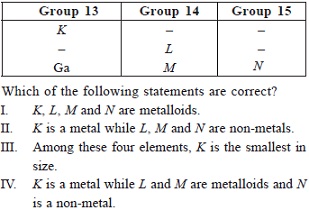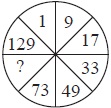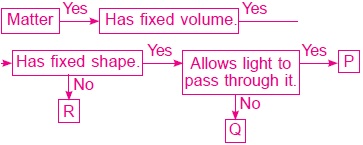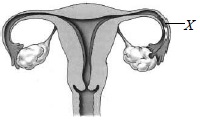Subject :NSO Class : Class 3
Subject :NSO Class : Class 10
Ans 1:
Class : Class 10
Why would (iii) be correct? Atomic size on going from left to right decreases so how would K be the smallest?
Post Your Answer
Subject :NSO Class : Class 7
Post Your Answer
Subject :NSO Class : Class 4
Post Your Answer
Subject :NSO Class : Class 7
Post Your Answer
Subject :NSO Class : Class 6
Post Your Answer
Subject :NSO Class : Class 8
Post Your Answer
Subject :NSO Class : Class 8
Post Your Answer
Subject :NSO Class : Class 9
Post Your Answer
Subject :NSO Class : Class 10
Read the given passage and fill in the blanks by choosing an appropriate option.
The molar ratio of CO2 and H2O produced by the combustion of one mole of hydrocarbon _i_ is 5 : 4. The succeeding homologoue of i is _ii_ while preceding homologoue is _iii_.
| i | ii | iii | |
| A | C5H8 | C6H10 | C4H6 |
| B | C3H8 | C4H10 | C2H6 |
| C | C5H10 | C6H12 | C4H8 |
| D | C2H4 | C3H6 | CH4 |










